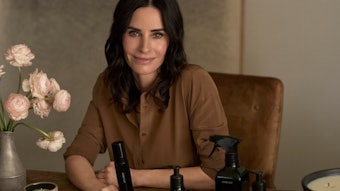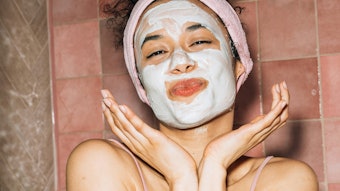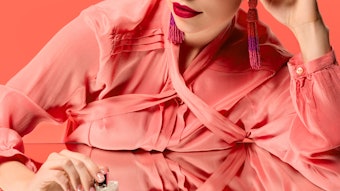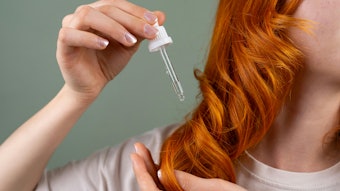According to Euromonitor International, bath and shower products are the slowest growing category within the beauty market, with global growth stagnating in real terms between 2001 and 2006. Commoditization is constraining unit prices and manufacturers are struggling to find new ways to add value.
Consumers are far more willing to economize on toiletries like bath and shower products than they are on cosmetics, such as skin care and makeup, trusting that the quality of even low-cost brands is of a high enough level to deliver basic hygiene. Despite a generally wealthier global market, price competition is fierce in the bath/shower category, brand loyalty is low and private label is a real threat—accounting for a fifth of global sales in 2006. This is further exacerbated by the retail distribution of the category—which is dominated by powerful supermarket chains and forces rival channels, including pharmacies, to compete on price.
Products faring best in the category are those that offer convenience and luxury—the dual demands of a wealthier global consumer base. Liquid soap was the fastest growing sector between 2001 and 2006, followed by body wash/shower gel. Bar soap declined in real terms by almost 9% over the same period.
Innovation Trends
Manufacturers’ challenge in this category is how to offer added benefits that will lead consumers away from budget product lines. Catering to pampering and wellness trends is one way they are achieving this. Cleansing is still the primary purpose of bath and shower products, but enhancing mood and offering an holistic at-home spa experience has also become key. Aromatherapy claims have, therefore, become commonplace, and formulations have become thicker, more fragrant and more luxurious. The launch of Shower Shock in the U.S. in 2007 is one of the more eye-catching examples of this trend. This bar soap contains caffeine and claims to give users their morning fix while they shower, equivalent to drinking two cups of coffee.
The at-home spa trend also offers opportunities for segmentation, with products distinguished by their affect on mood. U.K. company BubbleGel’s products—Desire, Relax, Sleep and Vitality—are illustrative. Despite this trend, however, consumers still prefer the convenience of showering, and bath additives are on the decline at the global level.
Recent years have also seen bath and shower products taking inspiration from skin care—with exfoliating, skin firming and moisturizing properties becoming more commonplace. In early 2007, the launch of Dove Pro-Age, an antiaging range that includes a beauty bar and body wash—targeted baby boomers. Johnson & Johnson added a pre-shave to its body wash to create Johnson’s Silk Skin Shower & Shave Cream. Sun protection is the next added benefit that is expected to appear in bath and shower products with the continuing development of “wash-on” technology, such as that developed by Aquea Scientific.
Natural ingredients play a major role in this sector—as both perceived safer alternatives to synthetic ingredients and as a way to add a hint of luxury—through the inclusion of exotic and fragrant botanicals or to nourish the skin with vitamins and minerals. Food is a major inspiration for natural bath and shower products—with olives, avocado, milk, honey, orange, mango and papaya among the ingredients finding their way out of the kitchen and into the bathroom. Some firms are taking this trend a step further, offering certified organic ranges. Companies such as Nature’s Gate are increasing consumers’ access to organic products, and the emergence of private label organic bath and shower lines shows that demand for organic ingredients has become mainstream.
Despite this focus on natural ingredients, antibacterial products still proliferate in the category. As ingredients firms such as BASF investigate the application of probiotics in hygiene products, including oral hygiene and deodorants, there may also be future soaps that are both natural and antibacterial. New delivery formats have also become a way for brands to compete, enabling them to differentiate themselves with eye-catching novelties. BubbleGel offers its bath and shower products in individual capsules combining foaming agents and essential oils. And foaming technology is still big news in liquid soap.
Yet innovation is slowing down in the bath and shower category as it becomes difficult to find new ways to add novelty, with new products struggling to achieve improvements enough to justify further price hikes. As brands become less profitable, manufacturers are finding it tougher to put money back into innovation.
Global Opportunities
The outlook is not all doom and gloom, however. While the key value markets of North America and Western Europe have reached saturation (their bath and shower products categories contracting by a combined $1 billion in 2001–2006), emerging markets are still enjoying dynamism. And as they grow, these markets are becoming increasingly important to the global market, cushioning the effects of the maturing developed countries. With booming new economies such as China, India and Thailand, for example, Asia-Pacific is forecast to have succeeded Western Europe as the largest region for bath/shower products in 2007, according to Euromonitor International.
Bath and shower products are one of the first beauty categories to benefit as undeveloped economies start to grow. Players hoping to benefit from the dynamism need to focus on offering affordable options and educating consumers on hygiene routines. Sachets are a popular method for bringing down unit prices in less affluent markets, and Procter & Gamble is just one manufacturer that offers many of its big-name bath/shower brands in a single-use packet. Unilever’s Lifebuoy bar soap has captured 13% of India’s bath and shower products category through its Swasthya Chetna (health awakening) program, which has taught over 70 million consumers about good hygiene practices since its 2002 launch in the region.
Key international players such as Unilever, which leads the global bath/shower category with a 21% share, are not the only companies seeing the benefits of fast-expanding emerging markets. Local manufacturers are ideally placed to offer cost-effective options, and through their wide distribution networks, they are better able to reach even remote rural dwellers. In Brazil, for example, global leaders Unilever, Colgate-Palmolive and Avon rank in the top 10, but the other seven players are all home-grown—including Natura, Indústria Matarazzo de Óleos e Derivados and O Boticário. According to Euromonitor, six of the 10 largest bath and shower products providers in China are local, whereas in India, there is a 50/50 split between international heavyweights and domestic rivals.
The multinationals are trying inventive approaches to selling in emerging markets and make the most of the opportunities. Procter & Gamble has introduced hanging product displays in Latin America, where small mom-and-pop stores still predominate, and utilizing ceiling space has become the solution to overcrowded shelves in the region. The company is also offering benefits to stores that stock more of its brands and display them front-of-counter and in more desirable places, including the “hot zone” around the cashier.
Longer term, however, the going is set to get easier as modernizing retail environments and more affluent consumer markets see consumers in the emerging markets trading up to the big-name international brands. The trend toward higher priced bath/shower products is already starting to take effect in India, the least developed of the booming BRIC markets. Euromonitor International statistics show that while the $1.2 billion bar soaps sector declined over 2001–2006, body washes and shower gels more than doubled in value to $11 million. Liquid soaps also enjoyed strong growth over the period (36%).
Outlook
With projected growth of less than 1% per year between 2006 and 2011, it seems the bath and shower category’s troubles are not over yet. In the developed markets, at least, the category is in need of some new ideas. Segmentation is one area which has scope for further development.
There are a number of products that have already sought to segment the market by targeting more narrowly defined consumers. There are also products for different rooms in the house (the kitchen, the bathroom) and times of the day (for example, Dove’s regenerating and calming nighttime body wash). However, manufacturers have largely failed to convince consumers of the benefits of a tailored solution over generic brands. Men’s bath and shower products, for example, account for just 3% of the global category, and products targeting the 1.4 billion consumers under the age of 11 attract only a marginally larger share of total sales. As global allergy rates reach epidemic proportions, hypoallergenic products and brands suitable for sensitive skin are also likely to find increased demand going forward.



!['Snoopy and Woodstock are cherished [characters] across generations and pairing them with our most-loved body care essentials creates a collection that feels classic with a modern twist. This launch is about celebrating our community with something unforgettable while starting an exciting new era for the brand,' said Luis Garcia, Chief Marketing Officer.](https://img.gcimagazine.com/mindful/allured/workspaces/default/uploads/2025/10/tree-hut-peanuts-fullcollection-fall26-1x1-1253.lGcuurUszp.jpg?auto=format%2Ccompress&fit=crop&h=191&q=70&w=340)






